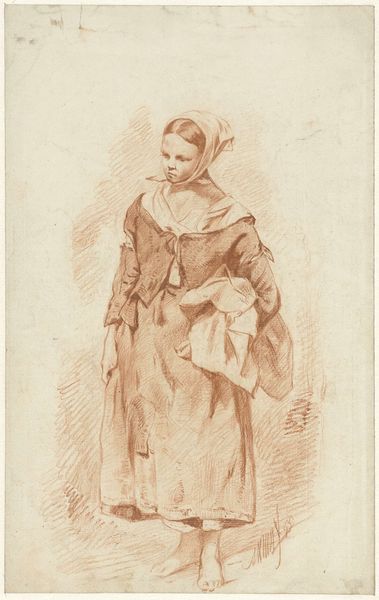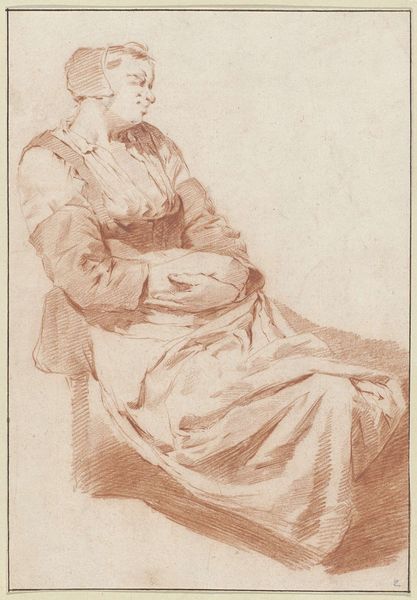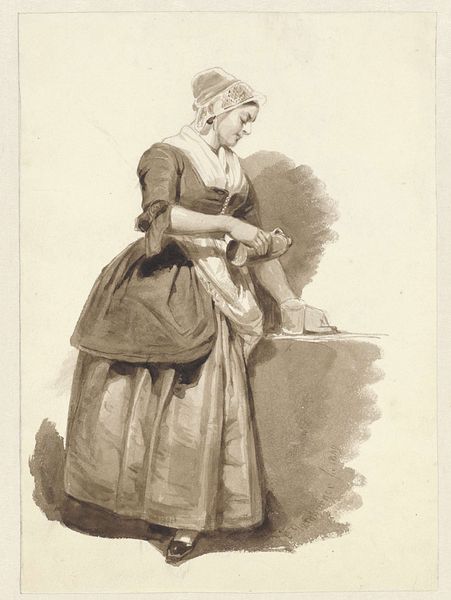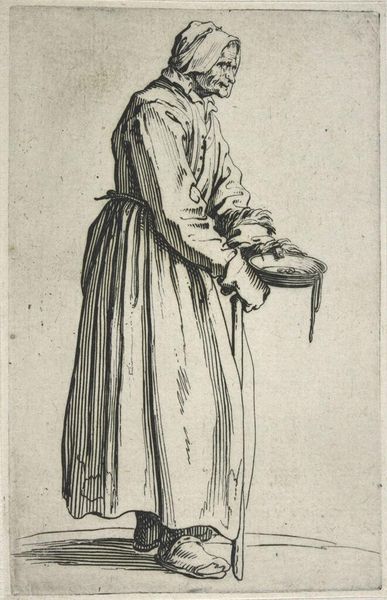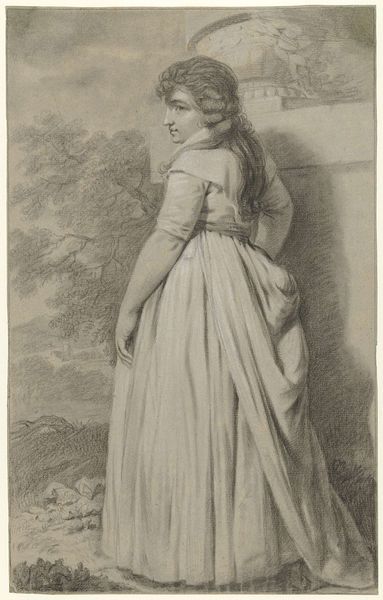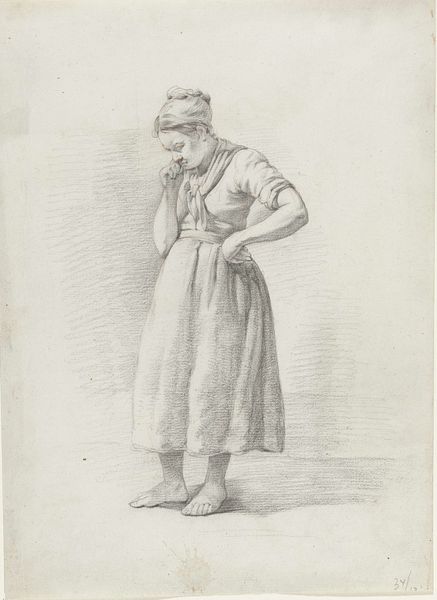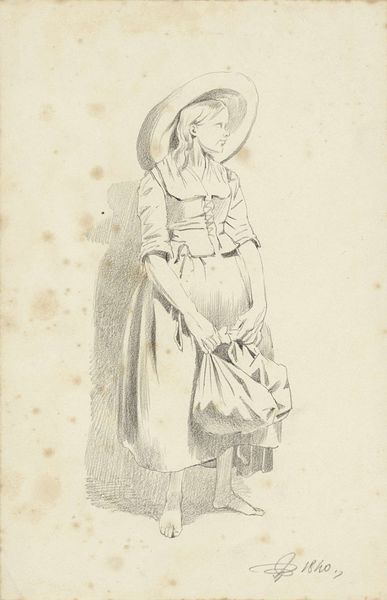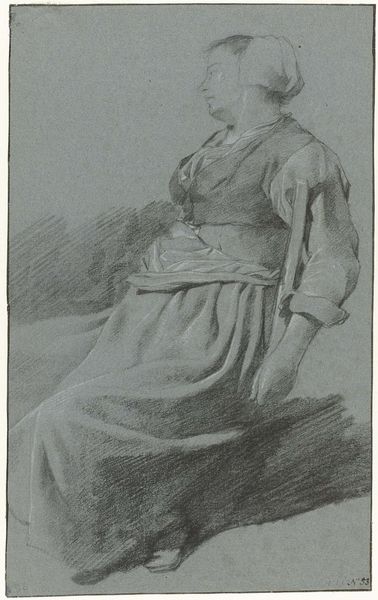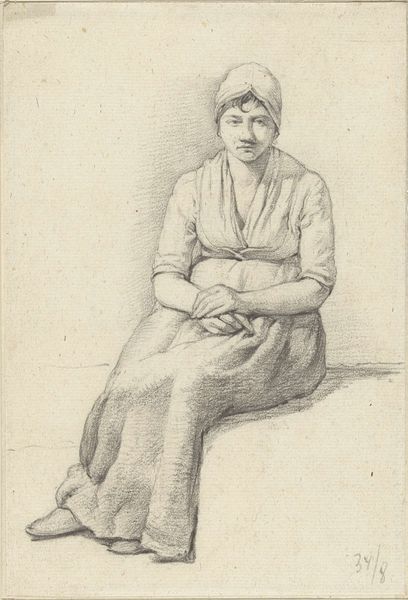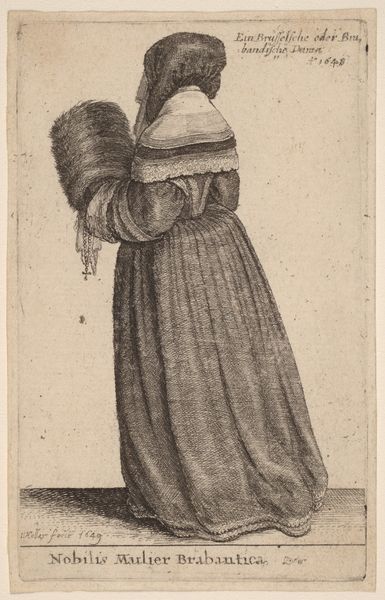
drawing, pencil
#
portrait
#
pencil drawn
#
drawing
#
pencil sketch
#
charcoal drawing
#
pencil drawing
#
pencil
#
portrait drawing
#
academic-art
#
realism
Dimensions: height 230 mm, width 125 mm
Copyright: Rijks Museum: Open Domain
Curator: This is "Standing Girl, facing left" by Johan Christiaan Willem Safft, created sometime between 1788 and 1849. It’s a pencil drawing, rendered with touches of realism and academic art styles. Editor: The bare feet and crossed arms give her a withdrawn yet grounded feel. It seems like the earth supports her. There's a stark honesty to the posture. Curator: I see in her posture not just withdrawal, but a contained resilience. Note how Safft has used clothing -- the simple head covering and layered shawl—to tell us a bit about the social circumstances of the sitter and the culture of the time. This clothing offers a peek into an agricultural or laboring background, where functionality dictated form. Editor: Exactly, that heavy shawl wasn’t made for style alone. Look at the density of the pencil work, especially around the draped fabric—it conveys weight, almost a burden, yet the way the fabric wraps softens the silhouette. Pencil, humble and accessible as it is, made this immediacy possible. We see Safft directly engaging with a person he probably knew, and we see a working class person represented here, immortalized even, where they often aren’t. Curator: The slight upward tilt of her chin is fascinating. This wasn't a posed shot, carefully contrived. There is no glamour here, but maybe just a straightforward attempt to capture someone present in daily life. To me, there’s also something archetypal about the woman, maybe drawing on established artistic tropes, particularly depictions of laborers that were common in the era. Editor: You’re right. Safft seemed less concerned with idealized beauty, and focused more on representing a palpable presence. But this also raises the question of who gets to decide what "presence" is? Consider, the gaze and perspective of the artist shaped how her "dailiness" was interpreted and presented, no doubt influencing how the work was then, and continues to be, received by the public. Curator: This drawing gives us a powerful snapshot of a time, class, and an individual life, using imagery that resonated with his viewers. The shawl especially functions as a signifier; to look at similar portraits from this era gives some clues as to Safft’s motivations for choosing this individual to immortalize in art. Editor: Looking at the materiality of pencil on paper makes you feel the work of representation. A stark, somewhat burdened humanity captured in accessible media that hints at the larger forces at play.
Comments
No comments
Be the first to comment and join the conversation on the ultimate creative platform.
